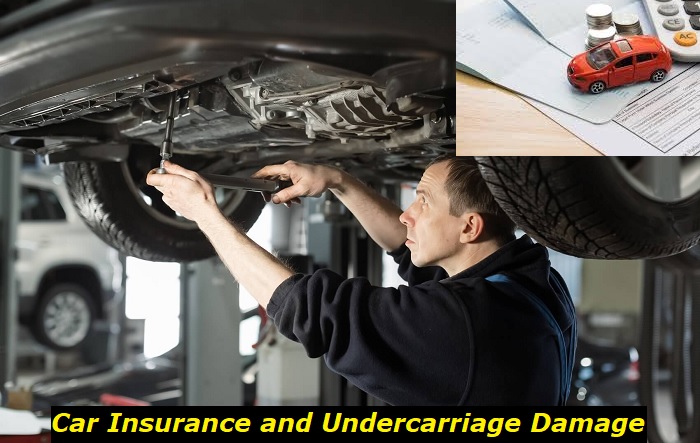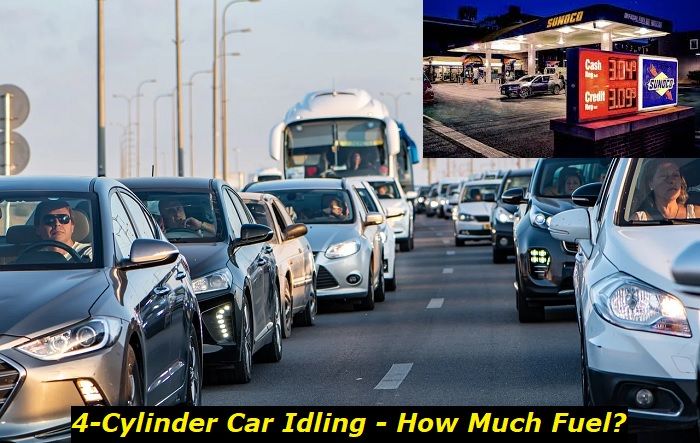Many people drive on the highway and suddenly hit a pothole or an object that they didn't notice. Now you are probably asking yourself, does insurance cover undercarriage damage?
The short answer is yes, car insurance covers undercarriage damage if you have opted for a collision coverage package or even a special undercarriage cover package. This package is a good thing to have if you accidentally hit an object on the road.

Here is what we are going to discuss in this article:
- What is an undercarriage?
- What does undercarriage damage mean?
- Causes for undercarriage damage
- How does insurance cover undercarriage damage?
- How to identify undercarriage damage?
So, without further ado, let's dive into the article.
What Is an Undercarriage?
A lot of people are not aware of what is a vehicle undercarriage. Let's first elaborate on this topic and learn more about what undercarriage is and what the core concepts are that you should know.
Vehicle undercarriage is considered to be the entire area on the bottom of the car. This includes the floor of the car, front subframe, suspension components, steering rack, wheels and tires, the bottom portion of the radiator, the bottom portion of the engine and transmission, the driveshaft, rear differential, exhaust system, and gas tank, as well as the plastic covers that come on the car undercarriage.
As you can see, there are a lot of parts and you need to be familiar with them. Cars are very complex machines and have a lot more parts than we are aware of.
What Does Undercarriage Damage Means?
Undercarriage damage means that there is damage to the components at the bottom of the vehicle.
So, let's say that you drove over a pothole, bent the suspension, and also damaged the wheel. This can be considered undercarriage damage.
Also, whenever you drive over a rock or a sharp object, this rock damages the radiator, steering rack, oil pans of the engine and transmission, or even the floor of the car. This is also considered undercarriage damage.
Basically, any type of damage that is done to these components that were listed previously by a foreign object can be considered to be undercarriage damage.
Causes For Undercarriage Damage
Now let's discuss more about the main causes and learn what are the main culprits for this type of damage done to your vehicle.
Knowing the causes is essential since not always the undercarriage damage is considered a hit by a foreign object. In some cases, this can be degradation caused by some compounds like salt.
1) Driving Off-Road
Off-road driving is probably one of the biggest culprits for undercarriage damage. Especially when it comes to inexperienced drivers who do not know how to tackle these terrains.
Also, there are vehicles that are deemed for off-road like crossover SUVs, and do not have the essentials for this purpose which are increased ride height and also skid plates to protect the engine and transmission. This is why if you damage your vehicle by driving off-road, there is a low chance that the insurance will cover the damage.
2) Driving On Salty Roads
Road contaminants can also cause damage to the undercarriage of a vehicle. For example, salt can be really deteriorating when it comes to the undercarriage.
If you live in a state where there is a lot of salt thrown on the roads during the winter, it is best to coat the undercarriage with a special coating in order to avoid damage to the undercarriage.
In some extreme cases, the whole frame can rust out and the car simply be totaled out since these rust holes are expensive to repair.
3) Driving Over Potholes
Driving over potholes is probably the most frequent cause of undercarriage damage. This can happen, especially if you drive through some areas where you haven't driven before.
You get too confident behind the wheel and you drive at high speed over a big pothole filled with water and you get suspension damage and a bent wheel. In some extreme cases, the wheel can even separate completely from the car.
4) Hitting An Object on The Road
Another situation where you can get undercarriage damage is the situation when you hit an object on the road.
Objects on the road can appear. For example, there can be some objects that can fall from a truck in front of you or some debris if there is a landslide right next to the road.
Depending on the type of debris that is left, if the debris is a rock, for example, you can get really serious damage. Much worse compared to the situation where you go over potholes.
Luckily, this type of damage is covered by the insurance company, and later on in this article, we are going to explain how.
5) Swerving off the Road
And the last type of undercarriage damage occurs when you swerve off the road and you hit a curb. Curbs can be really dangerous for the undercarriage of the car.
By doing so, you could easily end up with a damaged undercarriage. Broken suspension, coolant leaks, oil leaks, and damage to the car's floor will be very frequent whenever you end up in this type of situation. Luckily, this type of damage is also covered by insurance, and in the next chapter, we are going to learn how.
Does Car Insurance Cover Undercarriage Damage?
We learned that insurance covers undercarriage damage that occurred during a collision. But in order to get covered by this type of insurance you need to file a claim.
And in order to make a collision claim you should have to opt for the collision coverage package before the accident.
The collision coverage is optional. This is why if you opted for minimum coverage, you will most likely not be covered in this situation. Collision coverage is essential if you want to get covered by insurance in these situations when you experience undercarriage damage.
Also, when it comes to filing a claim for this type of damage, you need to pay a deductible. For example, in this case, when you hit something on the road, it is considered an at-fault claim. Meaning that it's your fault that the vehicle was damaged. So, filing a claim like this could affect your insurance rates in the future.
From our experience, if the damage is rather minimal, we think that it is not worth you to pay the deductible and file a claim. In most cases, it is much cheaper to fix this type of damage on your own.
Signs That You Have Undercarriage Damage
Now that we learned whether insurance covers undercarriage damage, let's learn more about identifying undercarriage damage and elaborate more on how you can determine if you have this type of damage on your car.
1) Fluid Leaks
Whenever you end up in a collision where you have undercarriage damage, the first things you want to check are fluid leaks.
This is really important since fluid leaks can often result in permanent engine damage if you resume driving the car.
If there are leaks on the ground, whether it is coolant, oil, or transmission fluid, it is important that you call a tow service and get your car towed from the place of the accident.
By doing so, you will avoid some permanent damage that can occur to the car's mechanical components.
2) Drivability Problems
Drivability problems can also be present whenever you have undercarriage damage. Let's say that you've hit a curb or you drove over a pothole.
In this case, you will experience a lot of drivability problems. The steering wheel will not be straight if a rod tie rod was bent or you have damaged the control arm.
Vibrations and clunking noises will also be present. In these situations, your best bet is to limp to the nearest gas station and call a tow. Or if you can safely stop on the highway to call a tow and estimate the damage to the undercarriage.
3) Visible Damage On The Undercarriage
And the last case is the situation where you have visible damage on the undercarriage of the vehicle.
If you lean on the ground, you will notice damage on the components if the damage is pretty big. If the damage is not so serious, you will probably have to get your car inspected to determine the extent of damage to the undercarriage.
Then, you can move on from there and fix the damage that was done to the vehicle.
Conclusion
In this article, we learned that insurance covers undercarriage damage. But in order to get your car covered by the insurance, you need to have a collision coverage plan opted out.
In addition to this, when filing for this type of complaint, you will have to pay a deductible because this type of collision is at-fault. In other words, you are the person to blame. And this can damage your insurance rates in the future.
So, your best bet would be to fix the car by yourself and don't file a complaint if there is minor damage done to the car. For example, a bent wheel or broken suspension components. This way, you will avoid damaging your insurance rates in the future.
In case the car was leased, you will have to contact the leasing company and move on from there.
About the authors
The CarAraC research team is composed of seasoned auto mechanics and automotive industry professionals, including individuals with advanced degrees and certifications in their field. Our team members boast prestigious credentials, reflecting their extensive knowledge and skills. These qualifications include: IMI: Institute of the Motor Industry, ASE-Certified Master Automobile Technicians; Coventry University, Graduate of MA in Automotive Journalism; Politecnico di Torino, Italy, MS Automotive Engineering; Ss. Cyril and Methodius University in Skopje, Mechanical University in Skopje; TOC Automotive College; DHA Suffa University, Department of Mechanical Engineering






Add comment